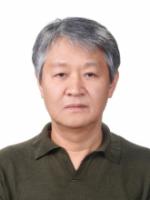
Professor Park received a B.S. in Mechanical Engineering from Hanyang University, an M.S. in Mechanical Engineering from the Korean Institute of Science and Technology, and a Ph.D. in Mechanical Engineering from the University of Iowa. He is currently a professor in the Department of Mechanical Engineering at Hanyang University. His research interests include: structural optimization, machine design, axiomatic design, design theory, multidisciplinary design optimization, and robust design
Linear static response structural response has been developed quite well by using the finite element method for linear static analysis. However, development is extremely slow for structural optimization where a non linear static analysis technique is required. Optimization methods using equivalent static loads (ESLs) have been proposed to solve various structural optimization disciplines. The disciplines include linear dynamic response optimization, structural optimization for multi-body dynamic systems, structural optimization for flexible multi-body dynamic systems, nonlinear static response optimization and nonlinear dynamic response optimization. The ESL is defined as the static load that generates the same displacement field by an analysis which is not linear static. An analysis that is not linear static is carried out to evaluate the displacement field. ESLs are evaluated from the displacement field, linear static response optimization is performed by using the ESLs, and the design is updated. This process proceeds in a cyclic manner. The method is named as Equivalent Static Loads method for non linear static response Structural Optimization (ESLSO or ESLM).
Out of various methods of ESLM, nonlinear dynamic response optimization is introduced. Nonlinear dynamic response analysis is carried out by a commercial system such as LS/DYNA, the ESLs are generated and linear static optimization is performed by a commercial optimization system. The interface module for the software systems is developed. Size and shape optimizations as well as topology optimization are demonstrated by using examples. Especially, crashworthiness and metal forming optimizations using ESLSO are presented with various examples. Recent development such as the hydroforming problem and the optimal control problem is demonstrated. The installation status of the method in the commercial software systems is shown and the future direction of the method is discussed.
Lindsay Walton
lwalton@ucsd.edu
